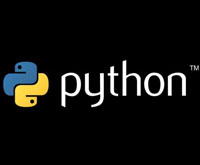如果你想实现一种新的迭代模式,使用一个生成器函数来定义它。下面是一个生产某个范围内浮点数的生成器:
def frange(start, stop, increment):
x= start
while x< stop:
yield x
x+= increment
为了使用这个函数,你可以用for循环迭代它或者使用其他接受一个可迭代对象的函数(比如sum(), list()等)。示例如下:>>> for n in frange(0, 4, 0.5):
… print(n)…
00.51.01.52.02.53.03.5
>>> list(frange(0, 1, 0.125))
[0, 0.125, 0.25, 0.375, 0.5, 0.625, 0.75, 0.875]>>>
讨论
一个函数中需要有一个yield语句即可将其转换为一个生成器。跟普通函数不同的是,生成器只能用于迭代操作。下面是一个实验,向你展示这样的函数底层工作机制:>>> def countdown(n):
… print(‘Starting to count from’, n)… while n> 0:
… yield n… n-= 1
… print(‘Done!’)…
>>># Create the generator, notice no output appears>>> c= countdown(3)
>>> c
<generator object countdown at 0x1006a0af0>>>># Run to first yield and emit a value>>> next(c)
Starting to count from 33
>>># Run to the next yield>>> next(c)
2
>>># Run to next yield>>> next(c)
1
>>># Run to next yield(iteration stops)>>> next(c)
Done!
Traceback(most recent call last):
File”<stdin>”, line 1, in<module> StopIteration>>>
一个生成器函数主要特征是它只会回应在迭代中使用到的next操作。一旦生成器函数返回退出,迭代终止。我们在迭代中通常使用的for语句会自动处理这些细节,所以你无需担心。

 千千惠生活达人注册
千千惠生活达人注册



